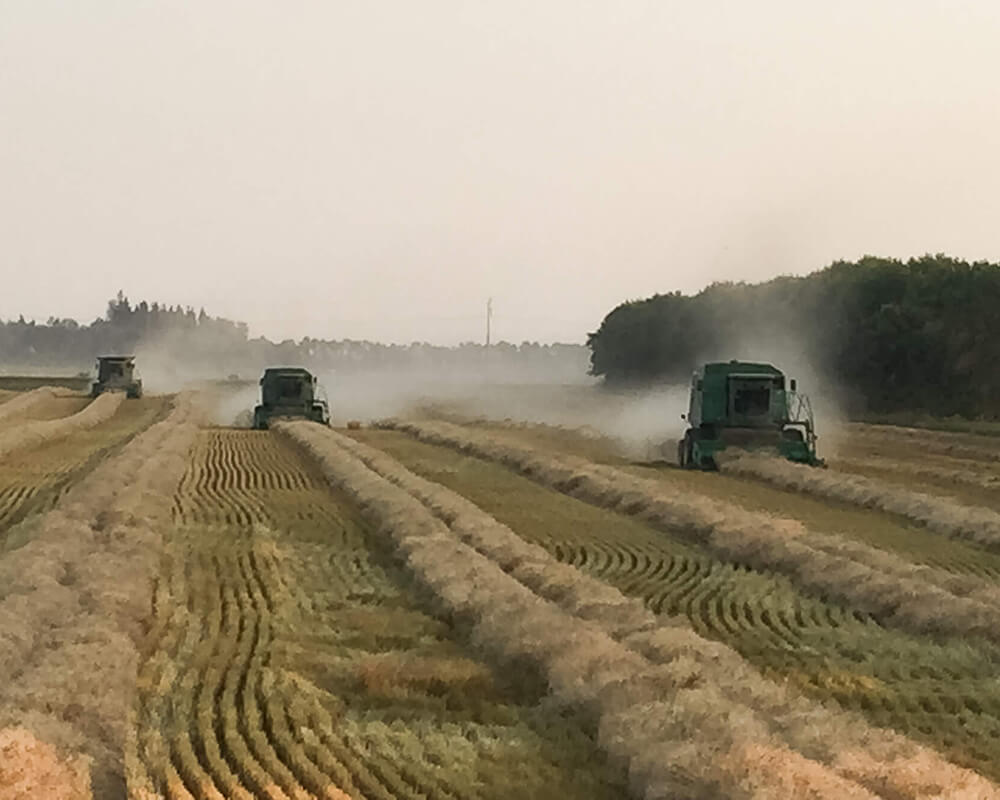Adam and Geoff grow wheat, canola, oats, corn, soybeans, sunflowers, and corn silage. They utilize the latest seed breeding technologies, giving a diverse crop rotation which helps to manage marketing as well as workload throughout the spring and fall.
To manage the farm’s extremely diverse landscape, Adam and Geoff employ land management practices which focus on the conditions of each land type. One third of the land base is zero tilled to counter water and wind erosion; one third is managed with minimal tillage; one third utilizes heavy tillage on the heavy clay soils which puts row crops into the rotation. Any land type not suitable for crop production automatically shifts into either pasture management or is left alone in its natural state.



Canola is grown as a vegetable oil that was bred from Rapeseed varieties at the University of Manitoba. “Can” from Canada and “OLA” meaning Oil Low Acid, distinguished Canola oil from natural rapeseed oil with canola’s lowered acid content, pleasant taste and light attractive colour.
Canola has benefited not only the farm with its grain production but has also benefited the farm with nectar production. Of the 275,000 lbs of honey produced on the honey farm annually, ¾ of that honey production has been collected off the Canola flowers.
Over the last 5 years the Farm has accessed crop breeding, equipment advances and precision ag technology and has embraced these opportunities to expand that rotation into corn, soybean and sunflower row crops.
Within this row crop shift, we then complement the silage corn with a short season grain corn which provides extra silage crop if needed in case of growth shortfalls. In good years we have been able to capitalize on the grain corn crop which has now become a staple within our crop rotation.
We also have been able to add other row crops to the rotation. Soybeans are considered every year and sunflowers have made its way into the crop rotation. The inclusion of sunflowers has been an important crop not only for the grain farm but also for the honey farm. Sunflowers generally start to bloom after the canola finishes which then provides a secondary crop for the honey farm to harvest.
This not only extends the honey flow but also helps extend the period of time the hives do not need to be fed to maintain their growth and development. Sunflowers have become a win-win cropping choice within the farm’s crop rotation.


